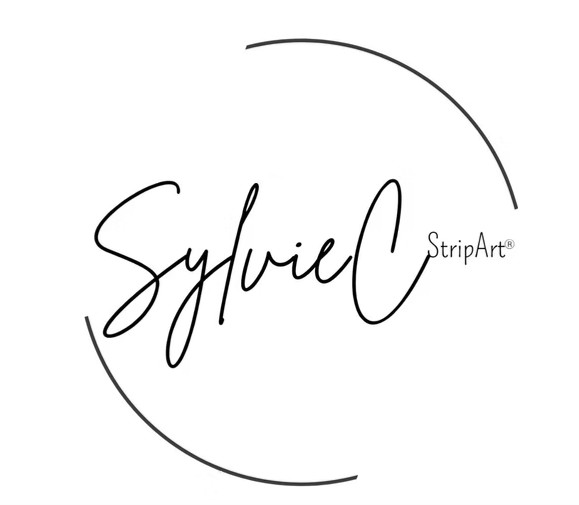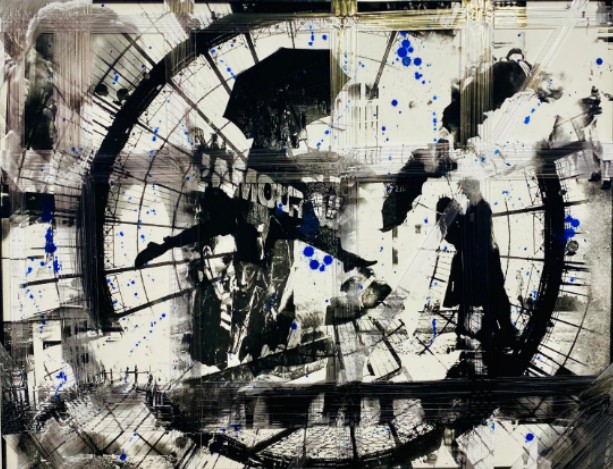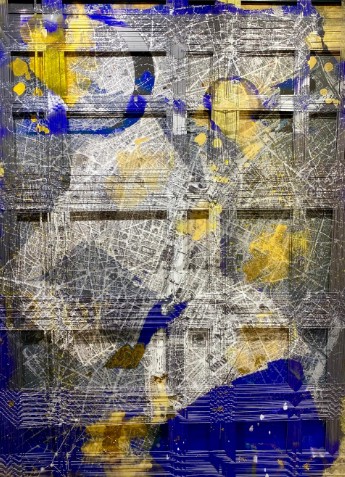The Icon Woven Anew
A bold reimagining of visual memory and iconic imagery, StripArt by Sylvie C transforms photography into woven relics of our cultural psyche. Through cutting, weaving, and reassembling, she fractures celebrity and symbolism into sculptural grids that challenge how we see and remember. Discover the art of fragmentation as a new form of connection.
EMERGING ARTISTSARTISTS
Charlotte Madeleine CASTELLI
7/31/20253 min read


Sylvie C’s StripArt and the Fabric of Cultural Recollection.
A silence that precedes image recognition—an instant of perceptual hesitation that Sylvie C stretches into a conceptual space. In that interval, where the eye strains to make sense of what it sees, StripArt unfolds. Not with spectacle, but with the quiet intensity of a practice that refuses immediacy and invites detour. It is precisely in this delay—between image and understanding—that the French artist's work locates its most vital gesture.
Sylvie C’s artistic process begins with rupture. A large photographic portrait—once a complete, coherent image—is deliberately and methodically sliced into narrow strips. These are then woven by hand into a grid-like textile, creating a hybrid form that exists somewhere between photography, tapestry, and sculpture. But the result is not simply visual intrigue; it is ontological unrest. Her surfaces are unstable, restless—rippling with the tensions between presence and loss, familiarity and distortion, legibility and erasure.


While images dissolve in the instantaneity of the digital gesture, StripArt introduces a tempo that demands presence, it recalls the labor of artisanship, yet it deals in the language of icons—those figures embedded in the collective imaginary. Twiggy, Audrey Hepburn, Andy Warhol, Frida Kahlo, David Bowie, Mahatma Gandhi—these are not merely famous faces. They are cultural residues, filtered through decades of visual saturation. When Sylvie C dismembers and reassembles them, she is not destroying so much as releasing them—liberating them from the rigidity of their media-mythology.
Her work does not quote the avant-gardes; it metabolizes them. The influence of Dadaist fragmentation and Pop appropriation is evident, yet Sylvie C advances these historical strategies into a new material and conceptual territory. Where the avant-gardes once aimed to subvert the image through radical negation, StripArt proposes something more nuanced: a reclamation of meaning through disassembly and recomposition. This is an iconoclasm not of destruction, but of renewal.
The woven surface of each work behaves like a visual interference field—simultaneously revealing and concealing. The grid itself is a spatial and temporal metaphor: not just a structure, but a rhythm. One must navigate these images slowly, relationally, allowing perception to adjust and meaning to emerge, often obliquely. It is in this performative act of looking—this engagement of viewer as decipherer—that Sylvie C's work transcends form to become a lived aesthetic encounter.
It is no coincidence that StripArt echoes the digital glitch. Yet where the glitch is accidental or machine-born, Sylvie C’s interference is deliberate, tactile, deeply human. The weaving reintroduces the body into the image—not only her own, through the gesture of making, but the viewer’s, through the embodied act of visual reconstruction. Her images do not present a singular truth; they require negotiation, interpretation, and intimacy.


There is also an undeniable curatorial dimension to her oeuvre. Sylvie C is not just assembling works; she is orchestrating a system of symbolic references that traverse disciplines—cinema, music, fashion, activism. This careful iconographic selection situates her practice within a broader discourse on memory and identity in the post-image era. As curator, I perceive StripArt as a visual archive, a living index that resists both the ephemerality of digital culture and the passivity of nostalgia.
Her recent exhibition in Bonifacio (Corsica) see link revealed the emotional and formal power of this approach. The works, installed with breathing space and architectural sensitivity, invited visitors not just to view but to inhabit the interstices of memory. The fragmentation was not alienating; it was intimate. The recomposed icons spoke of a fragility that feels profoundly current—celebrity as construction, identity as stratified, and perception as always incomplete.
Through StripArt, Sylvie C has authored a visual theory of the fragment. Her images are not about what has been lost, but about what might still be reimagined. In the weaving of slivers and shadows, she offers a new contract between image and viewer—one that honors complexity, ambiguity, and time. In an age seduced by the seamless, her work is a necessary interruption: imperfect, plural, and insistently real.
Explore more of her practice at sylviecstripart.com, and let your gaze be unraveled—slowly, deliberately, like thread from an icon.
© Charlotte Madeleine Castelli | All rights reserved